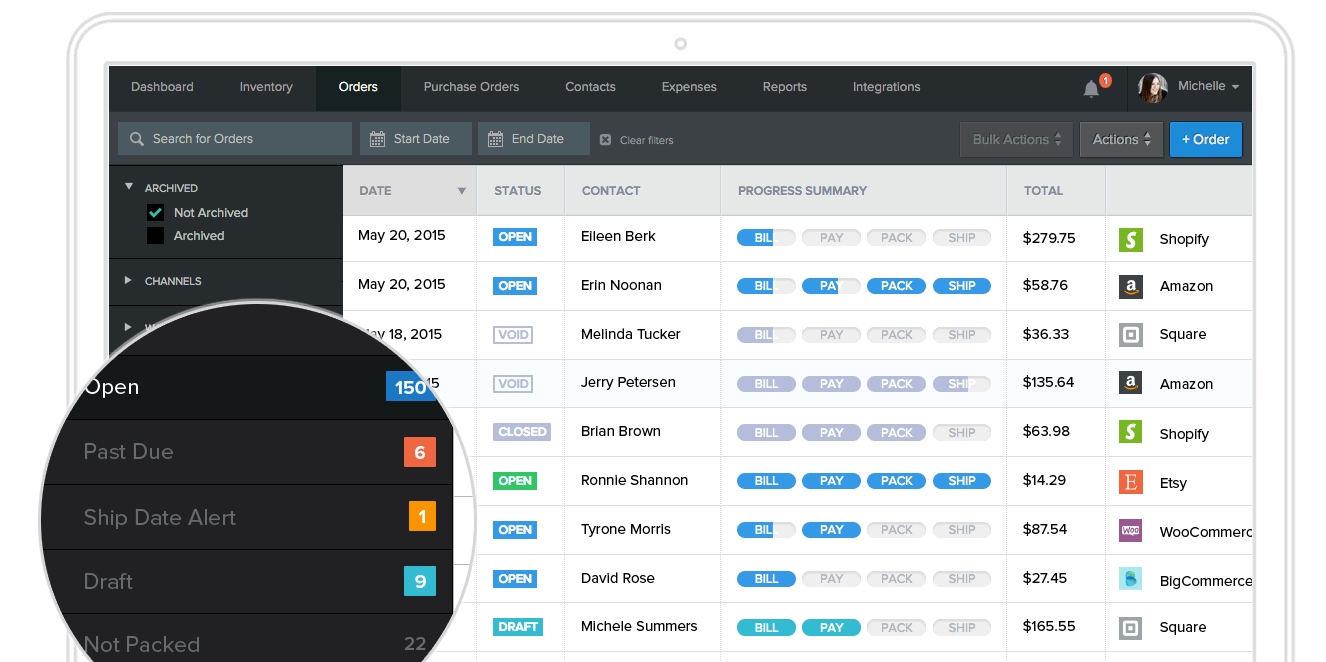
E-commerce Inventory Management Tools You Need
In the ever-evolving landscape of e-commerce, managing your inventory efficiently is paramount to your success. To help you navigate this challenging terrain, we present a comprehensive guide on the E-commerce Inventory Management Tools You Need. These tools empower you to optimize your inventory, reduce costs, enhance customer satisfaction, and ultimately drive your business to new heights.
Understanding Inventory Management in E-commerce
Before we delve into the tools you need, let's grasp the fundamentals of inventory management in e-commerce. In this digital realm, perplexity reigns as businesses handle vast inventories, multiple sales channels, and fluctuating consumer demands. Burstiness, too, is evident in the constant ebb and flow of orders and stock levels.
The Importance of Efficient Inventory Management
E-commerce businesses can't afford to underestimate the significance of inventory management. It's not merely about storing products; it's about optimizing their availability to meet customer demands. Burstiness in sales can leave businesses struggling to keep up, while perplexity can arise from complex factors like seasonality and supply chain disruptions.
The Perils of Poor Inventory Management
Inefficient inventory management can lead to overstocking, tying up capital in unsold products, or understocking, resulting in lost sales and dissatisfied customers. These challenges emphasize the need for E-commerce Inventory Management Tools to achieve a perfect balance.
The E-commerce Inventory Management Tools You Need
1. Inventory Management Software
Inventory management software like TradeGecko, Zoho Inventory, and DEAR Systems offer comprehensive solutions. These tools provide real-time data, order tracking, and automated replenishment, helping you maintain optimal stock levels. Their perplexity lies in their ability to handle multiple sales channels and warehouses seamlessly.
2. Demand Forecasting Tools
Forecasting tools such as Lokad and Forecast.it use complex algorithms to predict demand patterns. They excel in handling the perplexity of seasonal fluctuations and market trends, ensuring you burst with the right inventory at the right time.
3. Order and Shipping Management
Tools like ShipStation and ShipBob simplify shipping operations. Their burstiness comes from automating order processing, tracking, and generating shipping labels, allowing you to focus on core business tasks.
4. Dropshipping Platforms
Dropshipping tools, including Oberlo and Modalyst, enable businesses to source products from suppliers directly to customers. They offer a perplex solution to inventory management, as you don't need to stock any products.
5. Barcode Scanners and RFID
Using barcode scanners and RFID technology introduces efficiency and accuracy. Their perplexity comes from ensuring real-time tracking and minimizing human error.
6. Analytics and Reporting
Tools like Google Analytics and Power BI provide in-depth insights into your inventory's performance. Their burstiness lies in their ability to uncover sales trends, customer behavior, and more, helping you make data-driven decisions.
7. Multi-Channel Management
Managing inventory across various platforms can be perplex. Tools like Sellbrite and ChannelAdvisor simplify this process, allowing you to burst onto multiple sales channels seamlessly.
In the fast-paced world of e-commerce, effective inventory management is non-negotiable. The E-commerce Inventory Management Tools mentioned here are your allies in this perplex and burst environment. They help you maintain the perfect balance between supply and demand, ensuring the growth and success of your online business.
Summary
In the complex world of e-commerce, efficient inventory management is crucial for success. E-commerce Inventory Management Tools like inventory management software, demand forecasting tools, order and shipping management solutions, dropshipping platforms, barcode scanners and RFID, analytics and reporting tools, and multi-channel management platforms are essential for maintaining the delicate balance between supply and demand.
Frequently Asked Questions
1. What is the primary goal of inventory management in e-commerce?
- The primary goal of inventory management in e-commerce is to maintain the right balance between supply and demand, ensuring products are available when customers need them.
2. Why is demand forecasting crucial for e-commerce inventory management?
- Demand forecasting helps e-commerce businesses predict consumer demand patterns, enabling them to burst with the right inventory at the right time, reducing excess stock or stockouts.
3. How do multi-channel management tools benefit e-commerce businesses?
- Multi-channel management tools streamline the process of selling on multiple platforms, simplifying inventory management and order fulfillment.
4. What are the potential risks of poor inventory management in e-commerce?
- Poor inventory management can lead to overstocking, tying up capital in unsold products, or understocking, resulting in lost sales and dissatisfied customers.
5. How can analytics and reporting tools improve e-commerce inventory management?
- Analytics and reporting tools provide valuable insights into inventory performance, sales trends, and customer behavior, enabling businesses to make data-driven decisions.
6. How do barcode scanners and RFID technology enhance inventory management?
- Barcode scanners and RFID technology help streamline inventory tracking and reduce human error, ensuring real-time accuracy.
